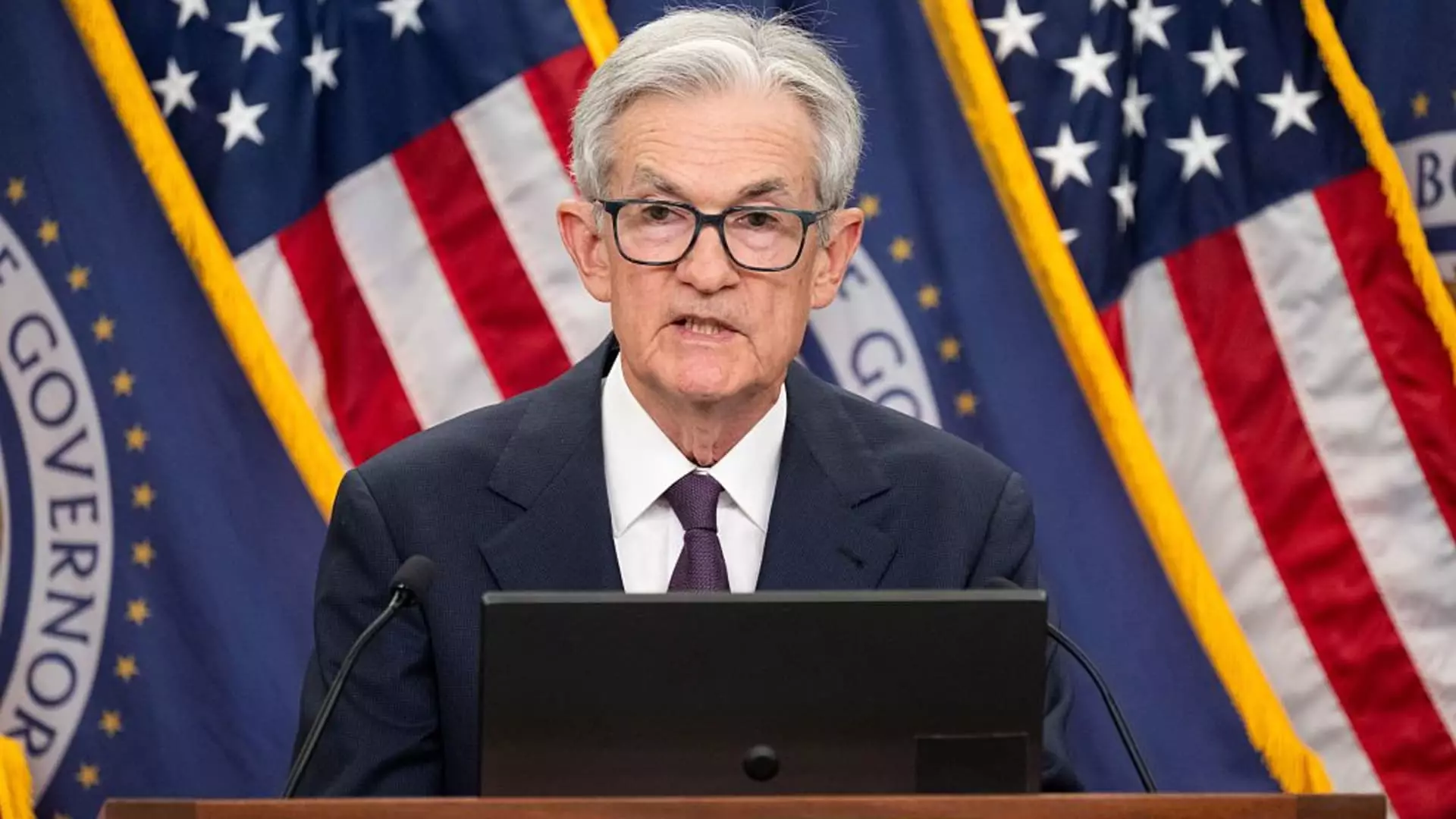The recent minutes from the Federal Reserve’s June meeting reveal a central bank at a crossroads, caught between conflicting signals from the economy and political pressures. On one hand, the Fed recognizes signs of a resilient economy with robust employment figures—surprisingly strong job growth and falling unemployment—yet, on the other, policymakers grapple with rising inflation fueled by unpredictable tariffs and lingering uncertainties. This duality underscores the Fed’s fundamental challenge: how to maintain economic stability without overreacting and risking a slowdown that could unravel the fragile recovery.
Despite unanimous agreement to keep interest rates steady at 4.25%-4.5%, the prospects for future adjustments remain contentious. Some officials advocate for an aggressive rate cut as early as July, aiming to temper inflationary pressures before they become entrenched. Others prefer a cautious, wait-and-see approach, emphasizing the importance of data dependence given the mixed signals. This split highlights the central bank’s internal dilemma—should it act preemptively to shield the economy from inflation, or prioritize safeguarding growth in a capacity-constrained labor market?
The core issue lies in interpreting the inflation signals. While consumer prices show only modest increases—0.1% in May—notably below the Federal Reserve’s 2% target, underlying inflation remains above the desired threshold. The interplay between tariffs, supply chain disruptions, and wage growth complicates predictions. Some officials view tariff-induced inflation as temporary, easing the pressure on policymakers to adopt aggressive cuts. Conversely, others express concern that inflation might prove more persistent, forcing the Fed into a tightening stance once again. This disagreement within the Fed underscores the importance of measured deliberation; hasty rate cuts could ignite inflationary expectations anew, while delays risk compounding labor market imbalances.
Political Climate and External Pressures: The Trump Factor
Amid this cautious internal debate, political pressures from the Trump administration crescendo. President Trump has vocally criticized Chair Jerome Powell and his colleagues, advocating for aggressive rate cuts to sustain a bullish economic narrative ahead of upcoming elections. His public denunciations, including calls for Powell’s resignation, threaten to politicize monetary policy—a move that could undermine the independence that is vital for an effective Fed.
This partisan pressure complicates the Fed’s decision-making process. The central bank’s traditional emphasis on data and long-term stability stands at odds with the Trump administration’s electoral calculus, which appears eager to demonstrate economic prowess through an optimistic stock market and low unemployment figures. Such political interference risks diluting the Fed’s credibility, which is built on a foundation of nonpartisanship and professional autonomy. True leadership requires resisting this pressure and prioritizing economic fundamentals over short-term political gains.
In the current environment, the Fed’s stance of patience and prudence seems justified. The minutes indicate a consensus for a “wait-and-see” approach, emphasizing the importance of maintaining flexibility. They acknowledge the potential for difficult tradeoffs if inflation remains stubbornly above target and the labor market begins to soften—a scenario that could force a difficult balancing act between tightening and loosening policy.
Economic Data and Market Realities: A Fragile Stability
Recent economic indicators reflect a complex picture. Job numbers continue to surprise on the upside: June’s employment growth of 147,000 far exceeded expectations, and the unemployment rate dropped unexpectedly to 4.1%. Simultaneously, consumer spending shows signs of fatigue, with personal expenditures dropping slightly and retail sales taking a significant tumble. These contrasting signals expose the economy’s uneven recovery—robust employment in the face of subdued consumer spending and slowing growth across certain sectors.
Inflation, meanwhile, remains stubbornly above the Fed’s comfort zone, elevated by tariff effects and persistent supply chain issues. Yet, recent sentiment surveys indicate that Americans are less worried about inflation in the near term, perhaps reflecting the market’s perception that tariffs will eventually be resolved or that firms can adapt quickly enough to mitigate inflationary pressures. This disconnect between perception and reality complicates policymakers’ task of calibrating rates—fight inflation too aggressively, and they risk derailing job growth; delay action, and inflation could spiral upward.
Furthermore, the trade negotiations initiated by President Trump inject an added layer of uncertainty. With tariffs still in flux, their direct impact on inflation and business investment remains unpredictable. The latest data showing minimal tariff-driven price increases suggest tariffs haven’t skyrocketed inflation yet, but that could change if trade tensions escalate or persist longer than expected. For now, the economy appears to be managing the tariffs better than expected, but future trajectories remain uncertain.
The Center-Right Liberal Perspective: A Call for Steady Leadership
From a center-right liberal vantage point, the current predicament highlights the importance of resilient, principled monetary policy anchored in economic reality and institutional independence. While the political urge to cut rates expediently is understandable—especially given the desire for a strong economy in an election year—succumbing to such pressures could undermine the credibility of the Federal Reserve.
A cautious, data-driven approach is the most prudent course. The Fed’s emphasis on waiting until there is clearer evidence of inflation’s persistence or labor market weakening aligns with responsible stewardship. Premature rate cuts driven by political motives risk inflaming inflation and complicating future policy adjustments. Conversely, maintaining modest patience allows the economy to adapt organically, whether through supply chain adjustments or corporate cost management, without risking a damaging inflationary spiral.
This prudence also acknowledges that economic resilience isn’t guaranteed; it must be protected through disciplined policy. An aggressive rate cut campaign, especially when inflation remains above target and the labor market still shows signs of heat, could lead to unintended consequences such as asset bubbles or an overheating economy. On the other hand, a too-hawkish stance risks slowing business investment and consumer confidence, which are already showing signs of fatigue.
In this delicate balancing act, leadership must remain centered—doggedly independent, focused on data, and resistant to partisan pressure. The goal is a stable, sustainable economy that rewards prudence over impulsiveness, ensuring long-term prosperity without falling prey to immediate political wins. Effective leadership in this context is about patience, clarity, and a commitment to principles that transcend political cycles.

